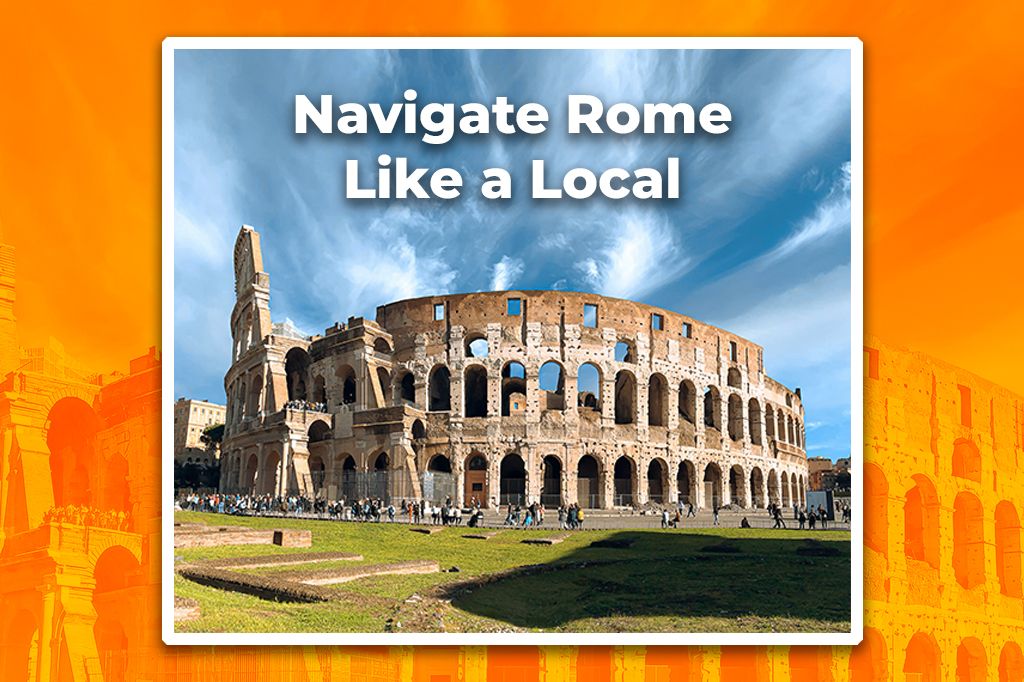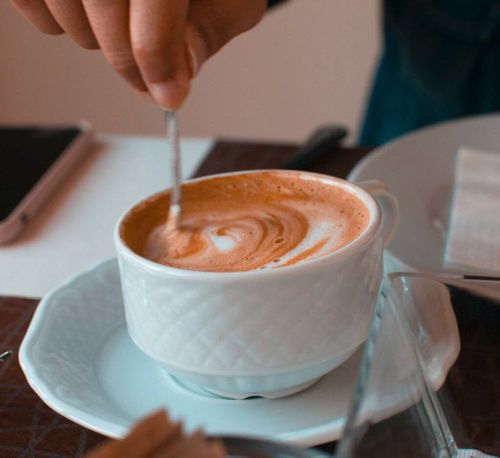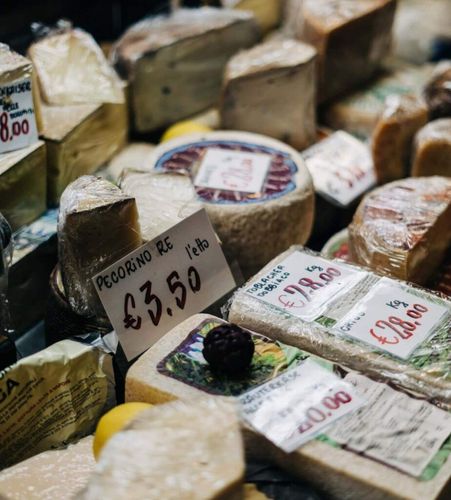Sundays in Rome aren’t for rushing, they’re for savoring. Start with a cappuccino at a street-side café, watching the city wake up. Then join locals for a stroll through Villa Borghese or along the Tiber. By midday, you’ll be savoring carbonara, sipping wine, enjoying gelato, and strolling through Trastevere.
On Sundays, Rome slows down and invites you to do the same. If you want to know how to make the most of Rome’s slowest, most soulful day, we’ll show you how to enjoy it like a local.

Picture by Zheka Boychenko on Unsplash
Want to enjoy a Sunday in Rome like a local without worrying about finding Wi-Fi or paying for roaming? Try a free eSIM from Yoho Mobile and stay connected from the moment you land. It’s instant, affordable, and works across Italy and beyond. If you want to get your eSIM plan afterwards, use the code YOHO12 at checkout for a 12% discount!
What to Do in Rome on Sunday
Morning in Rome: How Locals Start Their Day
By mid-morning, Rome feels less like a tourist hotspot and more like a real city. Locals are out and about walking dogs, picking up groceries, or stopping for a second coffee. Neighborhoods like Testaccio, Trastevere, and Prati are where you see this best. It’s the part of the day when life just happens on the streets.
Shops start opening up, street cleaners finish their routes, and the usual crowd at the local bars has already moved past breakfast and are chatting about whatever’s on their minds, usually the news or football. People say hi by name, and it’s clear this isn’t for show. This is just how mornings work here. You might spot a tailor’s shop with its door wide open or a woman buying bread for lunch. There’s laundry hanging from balconies, shutters halfway open, and neighbors shouting greetings across the street. Everyday life.
Around this time, bakeries and food shops get busier. Fornos pulls out fresh pizza bianca, and locals swing by the alimentary to grab lunch essentials. No one’s rushing, but there’s definitely a routine in how things move. There aren’t any must-see sights during these hours, but wandering without a plan through a local neighborhood is one of the best ways to understand how Romans actually live on a Sunday morning.

Foto de Reinhart Julian en Unsplash
Markets & Morning Culture: What’s Open and Worth Your Time
If you want to see how Romans really shop on the weekend, the markets are the place to be. Everyone knows Campo de’ Fiori, but there are other spots locals prefer like Mercato di San Teodoro and Mercato Monti.
Mercato di San Teodoro is open on Saturdays and Sundays from 8 a.m. to 3 p.m. More than 60 farms from around the Lazio region bring fruit, veggies, cheese, bread, olive oil, honey, and even flowers. There’s also a section where “farmer chefs” cook up simple traditional dishes and street food like fried fish or porchetta sandwiches. It’s a place that feels genuine.
Mercato Monti, on the other hand, has a totally different vibe. It’s a Sunday market in the Monti neighborhood near the Colosseum, running from 10 a.m. to 8 p.m. Here you’ll find young designers and vintage sellers with clothes, accessories, furniture, and cool collectibles. It’s part flea market, part design fair.
Shopping at these markets comes with some unwritten rules. Don’t grab the produce yourself, let the vendor pick and bag it. If you come back to the same stall regularly, you might get better service or a small discount. Vendors are happy to talk about their products and even share recipes if you ask. Bargaining isn’t as common at food markets as in flea markets like Monti.

Foto de Gabriella Clare Marino en Unsplash
Midday Escape: Where Romans Go to Relax (That Tourists Rarely Do)
By midday, especially on a Sunday, Rome hits pause. Shops close, streets go quiet, and the city almost sighs. This is when locals sneak off to walk, nap, eat, or just be. They slow down. If you want to do the same, two big parks offer totally different vibes. Villa Pamphili is where you go when you want to forget you’re in a city. It’s huge, in fact, Rome’s biggest park, and feels more like countryside than urban space. Hardly any tourists find their way here, and that’s part of the charm. You’ll see runners and cyclists too, but mostly it’s calm.
Villa Borghese is much more central and polished. It’s near places like the Spanish Steps and Piazza del Popolo, so more visitors end up there without even planning to. Still, it’s big enough to find quiet corners. You’ll spot kids rowing boats on the little lake, couples biking through the tree-lined paths, and people lounging near fountains. There’s more going on, museums, sculptures, and live musicians, but if you wander away from the crowds, it can still feel peaceful.
If you’ve got time to linger, try the Orange Garden (Giardino degli Aranci). It’s perched on the Aventine Hill and has a view of the whole city’s domes, rooftops, even the Vatican in the distance. The scent of citrus, the shade of the trees, and the soft buzz of people talking in low voices make it feel like a dream. Not far from there, you’ll find the Protestant Cemetery, a tucked-away corner near the Pyramid of Cestius where poets like Keats and Shelley are buried. It’s surprisingly peaceful. Definitely not your average tourist stop, but worth it.
So, a simple Roman Sunday escape could look like this: stroll through Trastevere to pick up supplies, then head uphill to Villa Pamphili. Spend a couple of hours eating, napping, and walking through the pines. Or if you’re near the center, swing by Villa Borghese, grab a shady bench, and end the afternoon with a quiet row on the lake. Rome’s at its best when you let it slow you down and midday is when that really happens.
Evening Delights: Gelato, Sunset, and Locals’ Favorite Spots to Unwind
Evenings in Rome are less about doing things and more about enjoying what’s already there. It’s the time when locals head out for a walk, grab a gelato, meet a friend for an aperitivo, or just find a spot to sit and watch the city wind down.
When it comes to gelato, Romans are particular for good reason. Most avoid the places with mountains of fluorescent gelato piled high in the window (usually near major piazzas). Good gelato spots tend to be understated. A few favorites always come up again and again: Gelateria del Teatro (you’ll smell the fresh herbs before you see it), Fatamorgana for odd but amazing combos, Torcè, and Otaleg in Trastevere.
As the light starts to fade, people drift toward viewpoints. The Spanish Steps are the postcard version, but it’s often packed and loud. If you want something a bit calmer, Pincian Terrace above Piazza del Popolo is a great pick, easy to reach, has plenty of space to sit, and a wide open view of the rooftops. There’s the Aventine Keyhole, which feels like a secret even if it’s not anymore. You’ll wait in line, peek through the keyhole, and see St. Peter’s framed perfectly. It’s quiet, and kind of surreal.
By 6:30 or so, the aperitivo crowd starts to gather. You’ll find tourists on hotel rooftops, but locals go for neighborhood places where they don’t need to shout to talk. In Trastevere, spots like Freni e Frizioni still hit that balance of casual but not boring. Over in Monti, wine bars pour local reds alongside small plates, and in Garbatella, it’s more laid-back still tables out on the street, families stopping by, no rush to leave.
Most people go for gelato after dinner, so if you want to skip the lines, go late in the afternoon. Aperitivo usually starts around 6:30, and the best places let you linger without pressure. It’s not about the food or drink really, it’s about closing the day right.
Your Roman Sunday, Your Way
If there’s one piece of advice for Sundays in Rome, it’s this: don’t try to squeeze too much in. There’s no one “right” way to do a Sunday in Rome and that’s kind of the point. Locals treat it as a slower, more open-ended day, and visitors can (and should) do the same.
Some of the best moments happen between plans, an unexpected conversation, a quiet street, and a second espresso because you feel like it. Rome rewards a slower pace. Let the day stretch out, and see where it goes.
